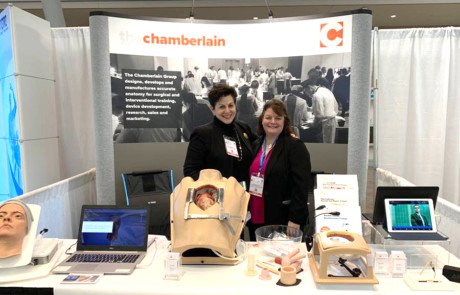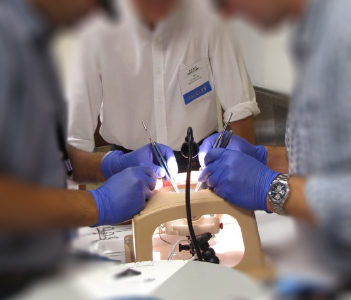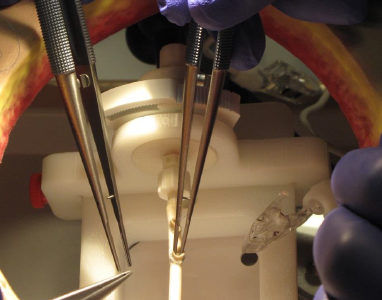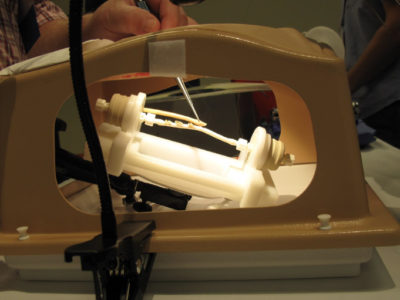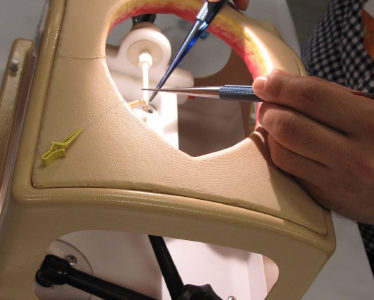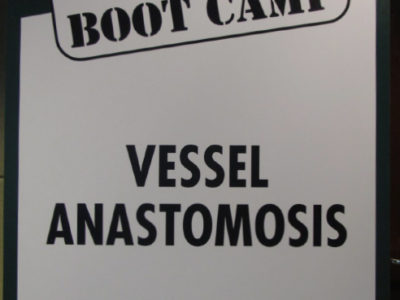Friday, December 1, 2006
By Helen Graves/Feature
Lisa Chamberlain can tell you that when one door closes and another one opens, the new perspective can be much greater than ever imagined.
That’s how it is with The Chamberlain Group, a leading supplier of medical models that are anatomically correct – down to the feel of the tissue.
Chamberlain founded the company with her husband Eric. She’s the managing partner, taking care of the business side. He’s president, heading up the design development team.
The models, which range from a patented beating heart to a colonoscopy trainer, are used by medical device companies, teaching hospitals and general hospital residencies.
They’re excellent for demonstrating new medical devices, sending out with the sales force that trained on them, developing new medical device products, and teaching physicians and residents new procedures.
Formally started in 1999 and based in Great Barrington, The Chamberlain Group’s models today are used worldwide in more than 49 countries. The company employs a highly specialized team of 15. Revenues have consistently grown in double digits year after year.
Boston Scientific, Medtronic, NASA, Intuitive Surgical and Edwards Lifesciences are just a very few of the clients that rely on expertly fashioned features in cardiothoracic, vascular, pulmonary, gastrointestinal, orthopedic, urological and reproductive and other surgical specialties.
Hospitals and universities include Lahey Clinic, Memorial Sloan-Kettering and German Heart Center Munich, as well as Carnegie Mellon, Johns Hopkins and UCLA Medical Center.
The scene was set for the new door and the broader opportunity when the visual effects company Chamberlain and her husband were working for was bought out and relocated to California. They didn’t want to go, so close that door.
A medical device marketer, who saw opportunity in surgical training for the quality of work they were concocting for movies like The Matrix and Eraser, called to see if they’d be interested in making models for him. So the new door opens a bit – they worked for him for a year and a half, in the background filling out the orders he took.
The door swung wide open when the marketer returned to his former work and the Chamberlains started The Chamberlain Group with two others on board. Although it didn’t quite feel so full of possibility at that time.
“We hadn’t been doing any front-of-house, to use a theater term, so we had no presence as a company in the market and we had no knowledge of the medical device market whatsoever,” Chamberlain says.
“We thought we would combine some of our movie and TV work and do some of this medical work, but we were very intrigued by this medical work and had an idea that it could be developed into a real business.”
Calls coming in on the 800 phone number, which the marketer left them, asking for models for an upcoming cardiothoracic medical meeting intrigued them further. They scoped out the meeting for competition and found that, basically, there was none.
“There were more of our models that had been sold previously than anyone else’s,” Chamberlain says. “We looked around and said, ‘Boy, is there opportunity here.’”
Chamberlain had never done sales or run her own company. Her closest brush with entrepreneurship was licking the envelopes on the outgoing bills for her father’s business.
A theater management major at Yale Drama School, Chamberlain interned and then stayed on at visual effects house R/Greenberg Associates in New York City. She happened to meet Eric there, but after six years went on to a post-production video house, eventually becoming a VP and general manager overseeing 85 people.
After 13 years in New York, Chamberlain moved to Lenox to work on feature films with many of the people she new from R/Greenberg, Eric included. “We had known each other for 24 years. We got together as a couple about 10 years ago, working for the effects company.”
To write the business plan, the Chamberlains took advantage of the UMass MBA program and worked with a student who made their plan her independent project – a plan that would win the five-college area competition.
Meanwhile, Chamberlain attended the university’s series of entrepreneurship classes that were open to the public. She also used the Massachusetts Small Business Center’s expertise and resources extensively.
“So now we had a business plan, an idea of the potential market, at least in the cardiothoracic area, and a few products, and we just started doggedly pursuing it.”
Chamberlain began calling some of the names on the business cards collected at the medical meeting, and with each contact grew the business. Then word of mouth took over and work came in on its own.
“It really was a ‘necessity being the mother of invention’ situation,” she says. “We were desperate for work and the market was desperate for products.”
Since there were models on the market for the more straight-forward kinds of demonstrations, The Chamberlain Group focused on the more complicated medical interventions, replacing the chicken breasts used in cardiothoracic demos, for example.
They take special orders to devise models for specific interventions, and they also supply customers with existing models. Parts are reusable: Blood vessels can be taken out and new ones sewn in for bypass graft practice; “skin” can be sutured, stapled and opened again. And each of the body parts is exactingly correct.
“Fatty tissue doesn’t feel the same as muscular tissue, “Chamberlain says. “We call ourselves an art and technology company because both contribute significantly to the excellence of our products.”
What Chamberlain has drawn from her past management experience is running projects like a producer, thinking about how much things should cost and how to make a profit on them, looking at the bigger picture and planning for the long-term.
Her biggest challenge, she says, has been finding the right people, so she’s drawn on the smart but somewhat quirky colleagues out of her past to take on roles that require an unusual combination of skills.
Chamberlain laughs when asked if the company was bootstrapped – “painful bootstrap,” she replies, “but I don’t think there’s any other kind.” The constant anxiety over the company’s continued success goes with the entrepreneurship territory, she believes, and it’s what gives this entrepreneur her edge.
Although she still attends medical meetings and tradeshows, Chamberlain has never hired a sales force or done any marketing other than direct contact. She is, however, about to embark on an awareness campaign to reach higher up the decision ladder within the companies The Chamberlain Group already contacts.
“We want to pop up one more level in our client base to the people who have more global decision-making ability for their companies. For example, we’re working for a Johnson & Johnson surgical division now and clearly not all who work for J&J know about us. If they did” – and here is where the new door’s grander view again comes into play – “what we’ve found out is, they’d use us.”
Original Article from: http://www.bostonherald.com
